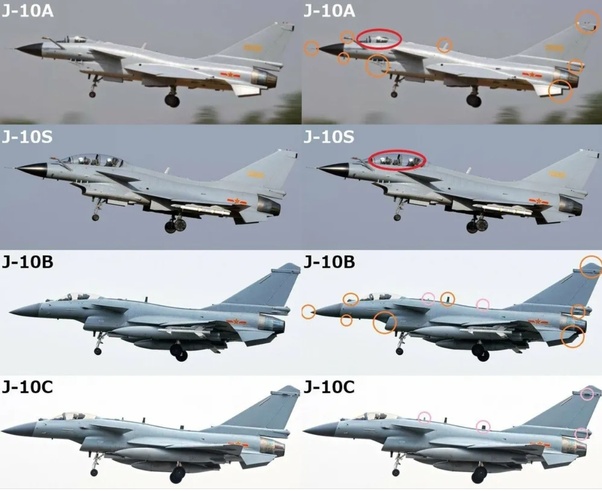The J-10C does not hold a very high position in the Chinese Air Force, and its role is similar to that of the F-16V in the U.S. Air Force.

If I were to create a comparison chart, it would better illustrate the J-10C’s place in the Chinese Air Force:

In the U.S. Air Force, the F-16 is regarded as a “low-cost, multirole lightweight fighter,” primarily used for routine patrols and deployed across numerous overseas U.S. airbases. It is the most numerous fourth-generation fighter in the U.S. military, with over 800 units. However, most are older variants, and the latest F-16V version numbers only around 100.
The J-10 serves a very similar role in China, handling low-intensity missions such as border patrols and intercepting foreign military aircraft approaching Chinese airspace. However, since China lacks overseas airbases, the J-10 fleet is much smaller, currently estimated at 300–400 units, with most being the latest J-10C variant.
As a fourth-generation fighter developed in the 1990s, the J-10’s combat capabilities fall far short of fifth-generation fighters, and it is now considered an obsolescent model in China. According to the Chinese Air Force’s future plans, no new J-10 series aircraft will be procured after 2030.
The J-10C has achieved impressive combat records in India-Pakistan air battles, thanks to some fifth-generation fighter features it incorporates. For example, it is equipped with a gallium nitride AESA radar derived from the J-20, with a detection range exceeding 250 km.
It also carries China’s PL-15 missile, developed for fifth-gen fighters, which has a range of over 200 km, giving the J-10C an edge over many fourth-gen fighters in combat.
Nevertheless, the J-10 series is playing an increasingly diminished role in the Chinese Air Force, and the cessation of procurement is only a matter of time. However, in the export market, the J-10 series remains highly competitive.
From a historical perspective, the J-10C holds great significance for the Chinese Air Force. Before the J-10, China had no experience in independently developing a complete fighter jet. Previously, it could only produce Soviet-authorized MiG-19s and MiG-21s, as well as Russian-authorized Su-27s.
In reality, the J-10 was China’s first domestically developed modern fighter.

The J-10C differs significantly from earlier variants. Early J-10A/B models used Russian engines, while the J-10C is powered by China’s WS-10B engine, features a DSI intake for improved aerodynamics, and delivers 20% more thrust with lower fuel consumption.
Its radar has also been upgraded from PESA to a GaN AESA system, and the aircraft now incorporates an infrared search-and-track (IRST) sensor and EODAS (Electro-Optical Distributed Aperture System). Additionally, it integrates the latest Chinese data link and advanced avionics suite.
While its range, maneuverability, and payload capacity are not exceptional, the J-10C’s detection and strike capabilities rank among the best in the 4+ generation fighter category.
Some sources suggest that the J-10 may be linked to Israel’s canceled Lavi project, with claims that Israel sold the aircraft’s design to China, which then developed the J-10 based on it. Externally, the two jets share some similarities, such as single-engine layouts, delta wings, and canards.
However, aviation experts argue that their aerodynamic designs differ significantly, and there is no evidence of a direct lineage. Moreover, the most critical components—such as the radar, avionics, and engine—were all developed independently by China.

Thus, the development of the J-10 was a milestone for China’s aviation industry. It marked China’s transition from a nation incapable of developing modern fighters to a member of the advanced aviation club. In China, it is a product worthy of being enshrined in a museum.






